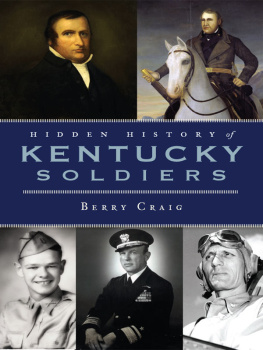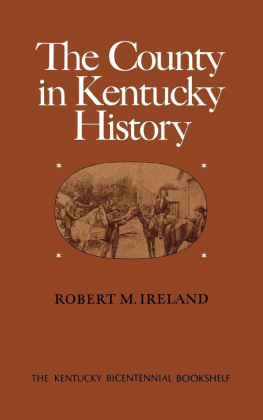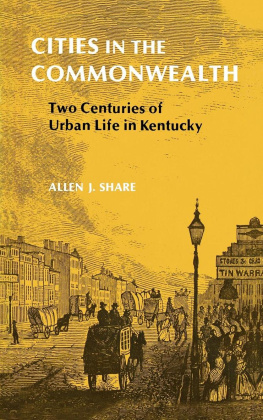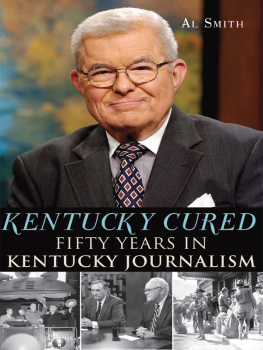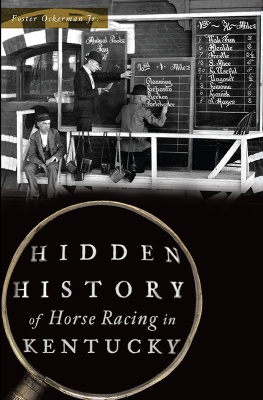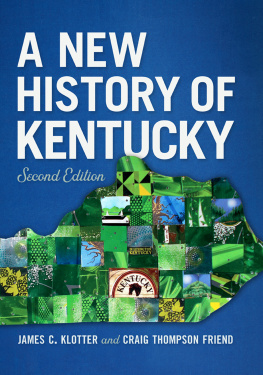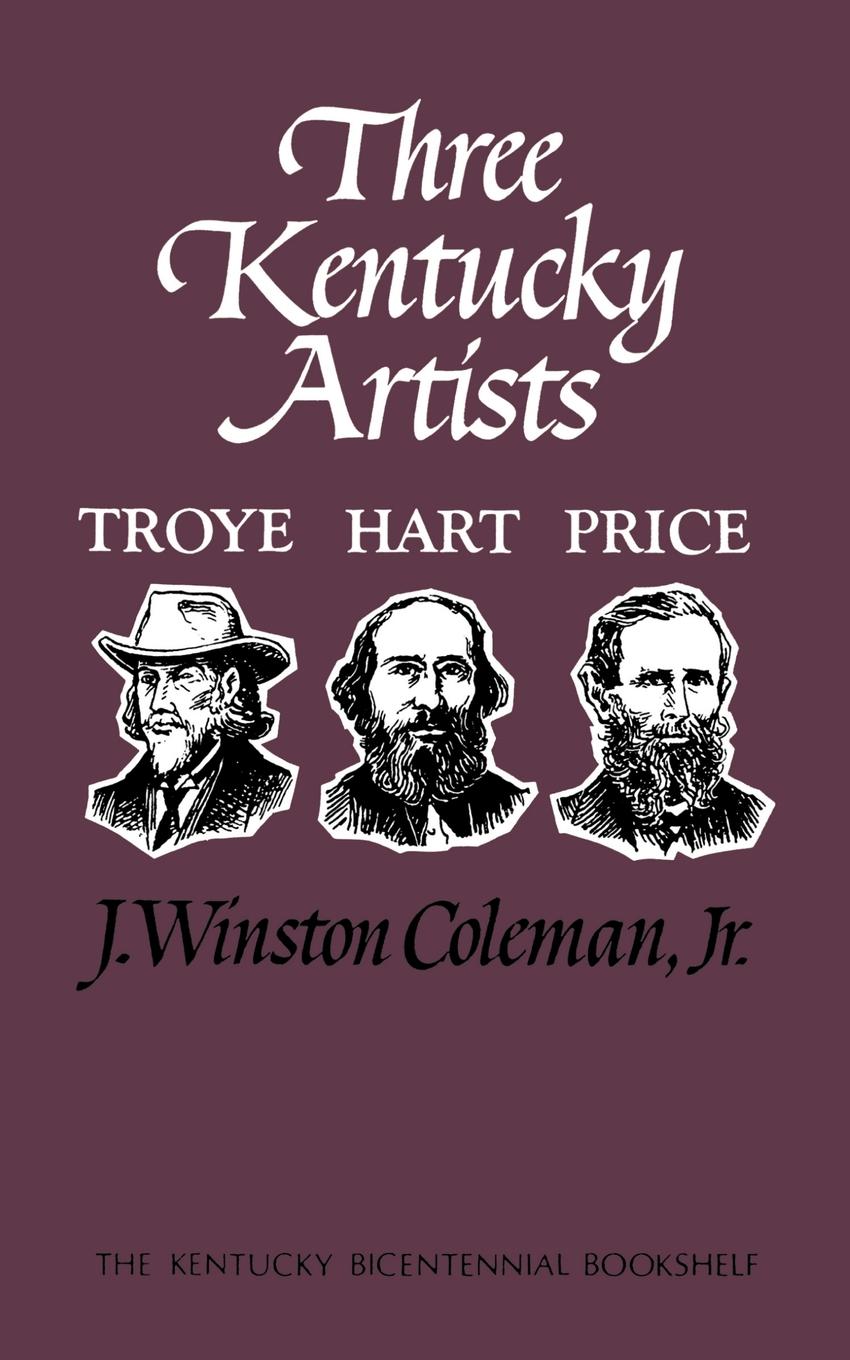THREE KENTUCKY ARTISTS
Hart
Price
Troye
THE KENTUCKY BICENTENNIAL BOOKSHELF
SPONSORED BY
Kentucky Historical Events Celebration Commission
Kentucky Federation of Womens Clubs
AND CONTRIBUTING SPONSORS
American Federal Savings & Loan Association
Armco Steel Corporation, Ashland Works
A. Arnold & Son Transfer & Storage Co., Inc.
Ashland Oil, Inc. / J. Winston Coleman, Jr.
Convenient Industries of America, Inc.
Corning Glass Works Foundation / Mrs. Clora Correll
The Courier-Journal and The Louisville Times
Covington Trust & Banking Company
Mr. and Mrs. George P. Crounse / George E. Evans, Jr.
Farmers Bank & Capital Trust Company
Fisher-Price Toys, Murray
Mary Pauline Fox, M.D., in honor of Chloe Gifford
Oscar Hornsby Inc.
Office Products Division IBM Corporation
Robert B. Jewell / Lee S. Jones
Kentucky Bankers Association
Kentucky Coal Association, Inc.
The Kentucky Jockey Club, Inc.
The Lexington Womans Club
Lincoln Income Life Insurance Company
Lorillard A Division of Loews Theatres, Inc.
Metropolitan Womans Club of Lexington
Betty Haggin Molloy
Mutual Federal Savings & Loan Association
National Industries, Inc. / Rand McNally & Company
Mrs. Victor Sams / Shell Oil Company, Louisville
South Central Bell Telephone Company
Southern Belle Dairy Co. Inc. / Standard Oil Company
Standard Printing Co., H. M. Kessler, President
Thomas Industries Inc. / Mary L. Wiss, M.D.
Younger Womans Club of St. Matthews
Three
Kentucky
Artists
HART, PRICE, TROYE

J. WINSTON COLEMAN, Jr.

Research for The Kentucky Bicentennial Bookshelf is assisted by a grant from the National Endowment for the Humanities. Views expressed in the Bookshelf do not necessarily represent those of the Endowment.
Copyright 1974 by The University Press of Kentucky
Paperback edition 2009
The University Press of Kentucky
Scholarly publisher for the Commonwealth, serving Bellarmine University, Berea College, Centre College of Kentucky, Eastern Kentucky University, The Filson Historical Society, Georgetown College, Kentucky Historical Society, Kentucky State University, Morehead State University, Murray State University, Northern Kentucky University, Transylvania University, University of Kentucky, University of Louisville, and Western Kentucky University.
All rights reserved.
Editorial and Sales Offices: The University Press of Kentucky
663 South Limestone Street, Lexington, Kentucky 40508-4008
www.kentuckypress.com
Cataloging-in-Publication Data is available from the Library of Congress.
ISBN 978-0-8131-9339-7 (pbk: acid-free paper)
This book is printed on acid-free recycled paper meeting the requirements of the American National Standard for Permanence in Paper for Printed Library Materials.

Manufactured in the United States of America.

| Member of the Association of
American University Presses |
Contents
Illustrations follow .
Preface
THE THREE ARTISTS whose lives are the subjects of these essays enjoyed considerable fame in their own day, although they are now little known outside of Kentucky. Each made a considerable contribution to the social and cultural life of central Kentucky in the nineteenth century and thus is of interest to Kentuckians who treasure their past. My purpose in these essays is to sketch for such readers the careers of the artists and their relationships with those of their contemporaries who played roles of some significance in the history of the Commonwealth.
Being neither an art critic nor a student of art history, I have made no attempt at critical evaluation of the works of my subjects, nor have I attempted to assess their influence in their respective fields.
One interested in the paintings of Price or Troye meets with great difficulty in locating and identifying them, for no catalog has been made for either artist. To fill the need of students and collectors for systematic lists of these works was beyond the scope of this study, but I have tried to provide a start by compiling a list of the portraits by Price that I have been able to locate. In the case of Troye, there is a real need for a search for his paintings and for other materials that might provide the basis for a comprehensive study of this interesting and little-known artist. Should some student of American art history choose to pursue this opportunity for research, I hope my brief essay may prove a useful beginning on which he may build.
J.W.C., Jr.
JOEL TANNER HART
1810-1877
HIGH ON THE LIST of Kentuckians who achieved more than statewide fame and reputation in the last century stands the name of the native-born sculptor, Joel Tanner Hart of Clark County. In his time he drew unqualified praise; the English sculptor George H. Saul called him the greatest sculptor of modern times, and considered him worthy of comparison with the old masters. He was also a poet of some merit; but he published little while he was alive, and despite the instructions in his will, circumstances saw that his work never found its way into print.
His full-length statues of Henry Clay stand today in the Jefferson County courthouse, one in the Virginia House of Representatives in Richmond, and another at the intersection of St. Charles and Canal streets in New Orleans. Some of the countrys most distinguished men came to his studio for a sitting, among them General Cassius M. Clay, Dr. Benjamin Dudley, Chief Justice John Marshall, Bishop Benjamin Smith, and General James Taylor. His circle of friends included Elizabeth Barrett Browning and Hiram Powers.
From the letters left to us in his estate, the articles about him in newspapers here and abroad, and the many signed works on display in the LexingtonLouisville area, a life story emerges, giving us not only an idea of Harts personal background and accomplishments, but a fine picture of life as it was in last centurys Kentucky for the artist and the man.
Joel Tanner Hart, the youngest of nine children about three quarters of a mile northeast of Winchester.
His father was an able surveyor, who assisted in building Morgans Station in Clark County, and was one of the first persons in the Western Country to build a flatboat and carry on trade with the Spanish settlements down the river at New Orleans.
The firms creditors foreclosed on Josiah Hart as the companys senior member, his slaves and farm were sold, and his wife, rather than sell the slaves she had inherited from her fathers estate, put them over the Ohio River into free territory.
Thus, when Joel Tanner was two or three years old, the family moved to another farm in Clark County, a mile or so east of their old home, on Ecton Road, directly across the highway from the one-story red brick house (still standing) of Josiah Harts brother Thomas. as best as he could manage.



